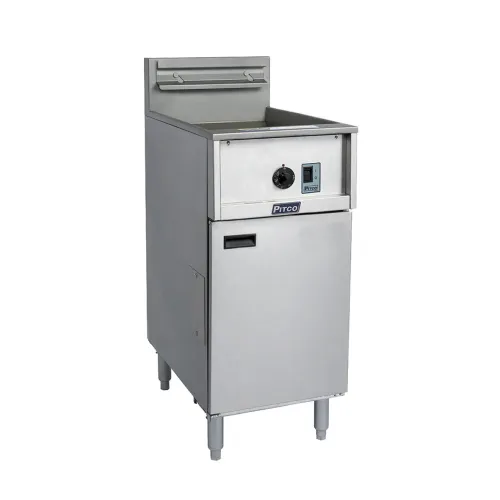
Frying apparently dates as far back as the beginning of cooking in a receptacle. In the days of old, it was discovered that meats placed before the open fire in an earthen platter retained their juices, and were generally more tasty and satisfying.
The natural fat near the surface of the flesh of an animal melted out first into the bottom of the dish, and frying took place. Thus, it was only a step to apply heat below the dish, and have the food cooked in this accumulation of natural fats. Soon some genius discovered that satisfactory food could be prepared in previously rendered and collected fat, and deep fat frying became an established practice. The original shallow spider, skillet or fry pan became gradually deeper, until a French Fry pot became a standard piece of kitchen equipment.
In 1918 J. C. Pitman and Sons Hotel & Restaurant Equipment Manufacturers, while attempting to work out a more satisfactory method of frying, made some important discoveries. One was that if the small particles of food which ordinarily settled to the bottom of the French Fry pot (where they collected and burned) could be kept away from the intense heat of that part of the kettle, the quality of fried food could be greatly improved. The Pitco Frialator was invented on this basic principle – – and patented. This brought about a complete change in the method of deep fat frying. The fat medium was heated by tubes running through the center of the fat container. This construction permitted all sediment from the food being fried to drip below the heating tubes into a cool zone where it could not carbonize and break down the frying fat.
The importance of this construction is the reduction in fat costs, which exceeds by a wide margin the initial cost of equipment, its depreciation and upkeep. Thanks to the thousands of Pitco Frialators now in use from coast to coast, deep fat frying has indeed become an art.




